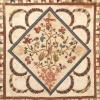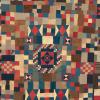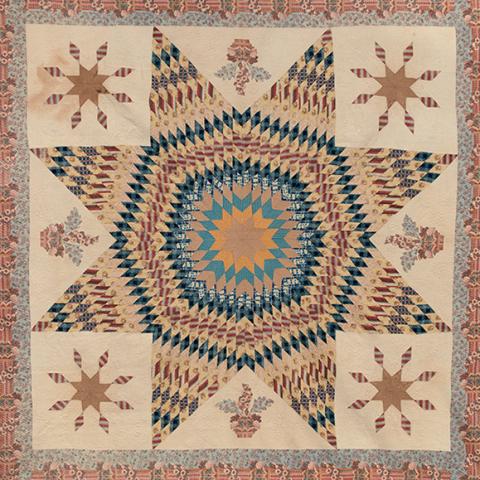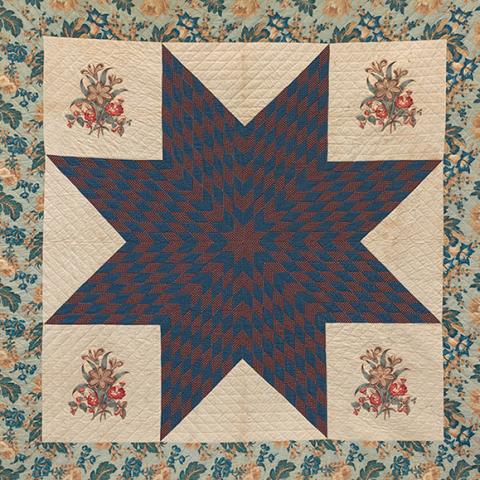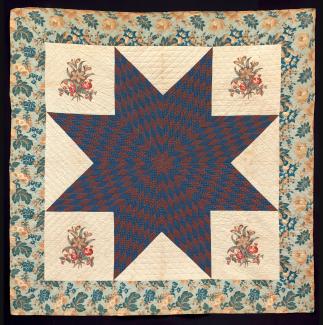
Click, swipe or drag the image, or use the buttons, to zoom and exploreTap the image and use the buttons to zoom and explore
This star design, common on the East Coast, had several names including Mathematical Star. The Republic of Texas adopted a flag with a single—lone—five-pointed star in 1836. The two designs had a natural affinity, and these quilts are now often called Lone Stars. Kitty Waring probably chose the design, with its outmoded chintz appliqués in the corner, to harken back to her genteel Eastern home. But it helped establish the Lone Star design in Texas.
Catherine “Kitty” Waring lived in southern Prince George’s County and married her cousin Edward Gantt Waring before their move to Texas in 1840. In the 1850 slave census, three African-Americans, including two women, lived at the Waring farm. Perhaps they were there to help with the quilt a few years earlier. Edward died in 1850, and by 1860, Kitty had returned to Maryland.
Block- and roller-printed cottons; silk filling
Blue and brown formed a popular color combination in the 1840s and 1850s. The chintz in the corners dates earlier. By 1850, star quilts’ chintz corners mostly were replaced by calico appliqué and pieced motifs. The silk filling, and style of the printed cotton used for the backing, suggest the quilt may have been finished around the turn of the century by a descendant.
Catherine “Kitty” Waring
Image courtesy Catherine Waring Barnes



